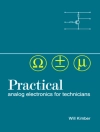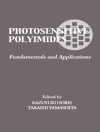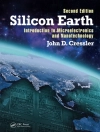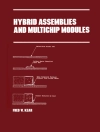Techniques and strategies for the production of nanomaterials and nanostructures have developed to an advanced level. However, the concepts and methods needed to correctly architect these materials into viable applications remains seriously lacking. This book introduces the concept of ‘Nanoarchitechtonics’, a term introduced by Dr Masakazu Aono to describe the correct manipulation of nanoscale materials in the creation of nano-devices and applications. With contributions from across the globe, Manipulation of Nanoscale Materials presents a broad spectrum of nanomaterials and their applications. Following an introductory chapter prepared by the editors, the book is divided into three further sections of chapters, detailing Nanoarchitectonics for Materials Development, Materials Nanoarchitechtonics for Bio-Conjugates and Bio-Applications, Materials Nanoarchitechtonics for Advanced Devices. The first book in its field, this is essential reading for anyone creating or deploying nanomaterials. Fully referenced to the primary literature, this title presents an excellent source of information, and inspiration, to the reader and should appeal to experienced materials scientists, nanotechnologists and postgraduate students. Dr. Katsuhiko Ariga is the Director of Supermolecules Group and Principal Investigator of World Premier International (WPI) Research Center for Materials Nanoarchitectonics (MANA), the National Institute for Materials Science (NIMS). Dr Masakazu Aono is Director General of MANA and group leader of the nano-system organiszation group MANA, NIMS.
表中的内容
1. Introduction: Origin and Future of Materials Nanoarchitechtonics;
2. Nanoarchitechtonics for Materials Development;
2.1. Supramolecular materials nanoarchitechtonics;
2.2. Controlled multiscale dewetting of self-organized block copolymers;
2.3. New materials nanoarchitechtonics based on clays;
2.4. Nanoarchtechtonics of Mesoporous Materials;
2.5. Nanoscale oxides in catalysis;
2.6. Nanoarchitechtonics of photocatalytic materials;
3. Materials Nanoarchitechtonics for Bio-Conjugates and Bio-Applications;
3.1. Design, synthesis, and application of bio-conjugate nanostructures;
3.2. Architechtonics of active sites: Life processes at nanodimension;3.3. Nanotechnology in drug delivery systems;3.4. Health impact of nanomaterials;
3.5.Separation of medically useful radionuclides: Role of nano-sorbents;
3.6. Self-assembled molecular gate field effect transistors for biomolecular sensing;
3.7. Nanostructured materials for biosensor applications: comparative review of preparation methods;
4. Materials Nanoarchitechtonics for Advanced Devices;
4.1 Nanostructures in organic photovoltaics devices;
4.2. Substrate alignment by surface probe lithography;
4.3. Multiple-scanning-probe microscopy and related techniques;
4.4. Cantilever array sensors;
4.5. Design of quantum Hamiltonian single molecule logic gate
关于作者
Katsuhiko Ariga has been working on supramolecular chemistry especially related with self-assembly processes, ultrathin films and molecular recognitions. Accomplishments in his researches contribute significantly developments of biomemetic systems as well as physicochemical understanding on interfacial phenomena. Especially, pioneer researches of layer-layer supramolecular assembly have been highly evaluated, and he is also recognized as an authority of supramolecular recognition at the interfaces.












